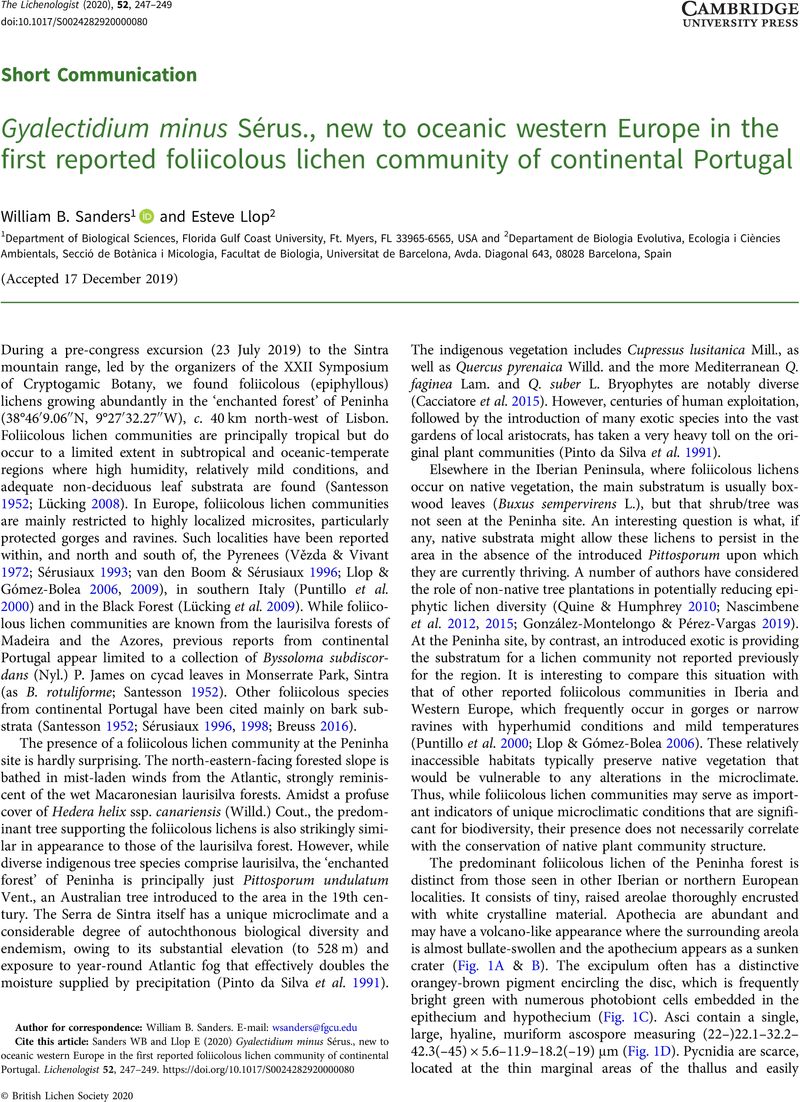Article contents
Gyalectidium minus Sérus., new to oceanic western Europe in the first reported foliicolous lichen community of continental Portugal
Published online by Cambridge University Press: 03 June 2020
Abstract

- Type
- Short Communications
- Information
- Copyright
- Copyright © British Lichen Society 2020
References
- 1
- Cited by




